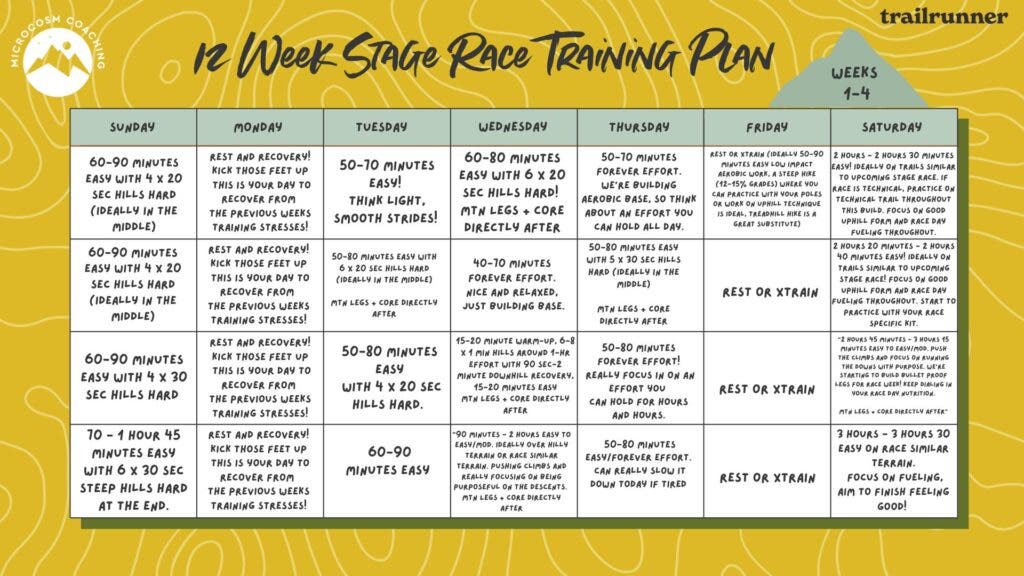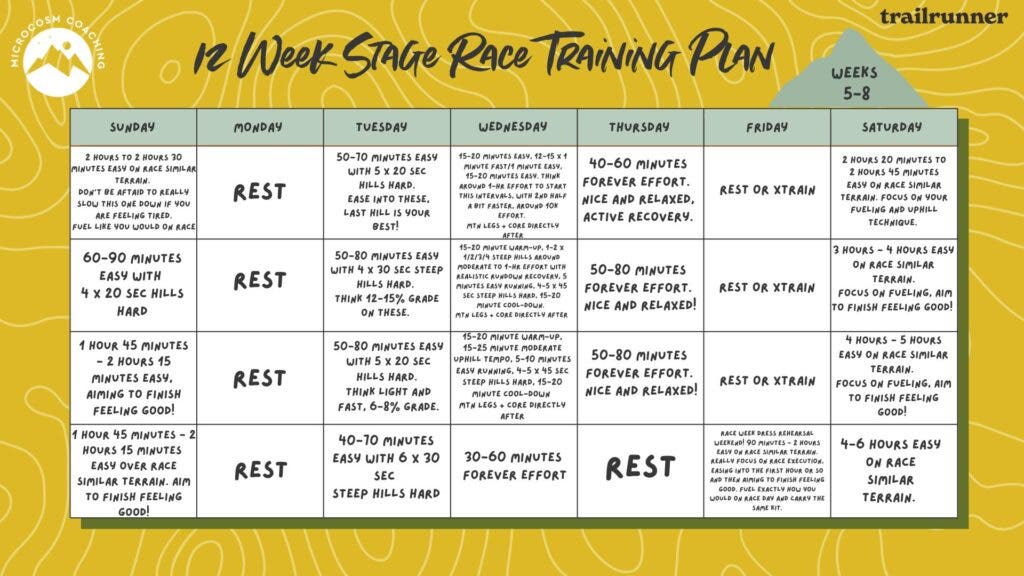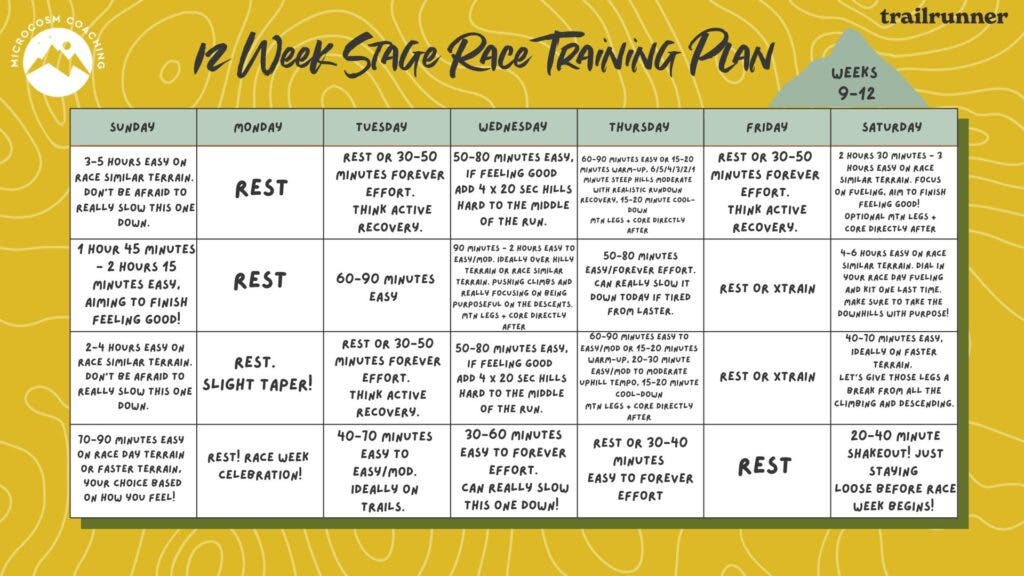How to Train For a Stage Race

Trail running through the mountains of Glacier National Park.
So you want to train for a stage race.
Once you’ve read our definitive guide to stage racing, and picked out your event, it’s time to train. This plan from TJ David at Microcosm Coaching is for intermediate to advanced runners preparing for a multi-day stage race event. Since most stage races tend to take place in more mountainous terrain, this plan incorporates specific training for that, though you can tweak to fit the specifics of your event. This plan uses time as a guideline (rather than mileage) for more flexibility, and a variety of ranges for time are given. You don’t need to do “the most” to get ready for your event. Do the volume that feels good, and don’t run yourself into the ground. Rest if fatigue persists for more than a couple of days, or at the first sign of a niggle or injury.
How to Train For A Stage Race
This 12-week training plan will help you gradually increase mileage and includes a weekly long run and introductory speedwork. Starting at around five hours a week, the plan focuses on running for time to make it approachable for athletes who have been running three to four times a week. Training by time helps limit how long you’re out there running and can help you better gauge effort level (hint: most of it should feel easy!) rather than focusing purely on hitting the mileage.
The goal of this training plan is to build endurance or aerobic capacity. Endurance takes a long time to develop, but the benefits are equally long-lasting. A common misconception about base training is that it’s just easy miles, when in fact, building a proper base is made up of several components to target every element of your fitness. The body doesn’t work in mutually exclusive energy systems, nor do you only develop base, speed or strength one at a time. Every run is a little bit of everything in different combinations.
Long Runs
This plan includes weekly long runs to build strength and endurance. The goal is to run easy, and fuel well, which will help build denser mitochondria, boost capillary beds, improve mental toughness, improve muscular strength and improve running economy.
We’ll also be using back-to-back long runs to simulate the experience of running higher back-to-back volume during a stage race. The big keys here are to pace intelligently, and really focus on recovery between efforts. Dial in your post-run nutrition, kick your legs up and make sure you’re recovering between sessions.
Speedwork
Speedwork? For a stage race? Heck yes! While it’s not the primary focus, it’s still important in helping maintain turnover and neuromuscular fitness (how effectively your brain communicates with your muscles). This plan uses strides and short hill repeats to build fitness and improve running economy. Without that element of speed, you won’t develop as much neuromuscular fitness and may slow down with time.
Cross-Training & Strength
The plan includes spots for optional cross-training once a week, like hiking, biking, skiing or swimming. The goal is not to wear yourself out on cross-training days, but to support our overall goal of keeping things mostly aerobic. Some strength training is great too; we recommend an easy and infinitely repeatable workout like this Strength Work Cheat Sheet.
Here’s a PDF of the training plan you can print out. Stage Race Training
from Microcosm Coaching.


